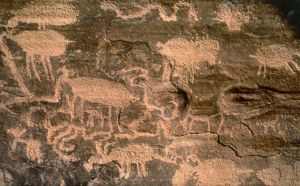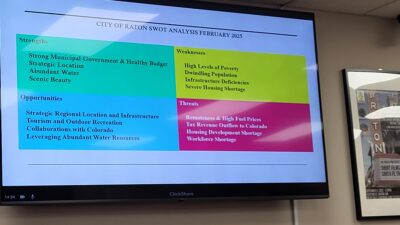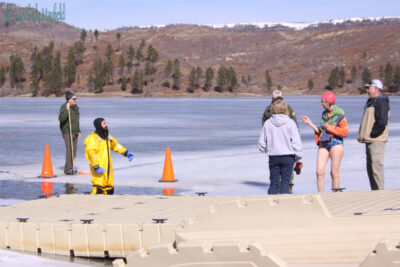Interview with Dr. Lawrence Loendorf, anthropologist/archeologist, Part one of two
by Bob Kennemer
 LA VETA — Recently one of North America’s foremost anthropologists/archaeologists, specializing in the ethnography of the intermountain West, gave a talk in La Veta. Dr. Lawrence Loendorf (he prefers to just be referred to as ‘Larry’) was en route from Montana to his winter home in Albuquerque and was invited by the La Veta Public Library and Francisco Crossing to present. Loendorf chose to speak on the subject of technological advances in the study of rock art both in the field and in the lab.
LA VETA — Recently one of North America’s foremost anthropologists/archaeologists, specializing in the ethnography of the intermountain West, gave a talk in La Veta. Dr. Lawrence Loendorf (he prefers to just be referred to as ‘Larry’) was en route from Montana to his winter home in Albuquerque and was invited by the La Veta Public Library and Francisco Crossing to present. Loendorf chose to speak on the subject of technological advances in the study of rock art both in the field and in the lab.Even with more than 11 books that he authored or co-authored under his belt, plus numerous honors and awards, Loendorf is very humble and down to earth. Sitting in on his presentation was more like being in the living room of an old friend, who just so happens to know a whole lot and shares his knowledge with exuberance. Loendorf’s excitement was catching as he shared dozens of photographs of himself and his teams studying petroglyphs (etched or pecked in stone) and pictographs (painted on stone) of Native American rock art throughout the west.
A deep respect for Native Americans is evident as Loendorf speaks; noting that Indian people do not consider these works “rock art,” but as something more spiritual and cultural. It is clear that Loendorf works hard to understand Native peoples, along with their history, and has worked closely with many western tribes.
Throughout his talk, Loendorf stressed the need to protect and preserve rock art sites. One cardinal rule is to be cautious when approaching a rock art panel, as there are often artifacts at the base of the panel in the soil. Another rule is to not touch rock art, as oils in one’s skin can erode the art and affect the ability to properly date the site, when contaminated by modern DNA. “These technological advances we now have allow us to study rock art without damaging it,” notes Loendorf. He told the audience about special portable x-ray machines that can help analyze the art without touching the actual panels.
When asked how he came to be interested in the rock art of southeastern Colorado Loendorf said, “About 20 years ago the University of Denver had been contracted to conduct a survey of rock art sites within the Piñon Canyon Maneuver Site. The DU team was overwhelmed as they found far more sites than was ever expected, mainly along a hogback. The Army asked me to review the study and the sites.” When he did so, Loendorf found even more sites, saying although the hogback area in the PCMS was full of sites, more than 100 boulders were found with art panels on them.
“There are more than 300 petroglyph sites in Las Animas County, with more than 200 of those sites being in Pinon Canyon,” states Loendorf. Additionally, the PCMS is home to old Spanish ruins, North America’s longest dinosaur track way, and hundreds of other anthropological/archeological sites. Loendorf said the hogback site is off limits now as it is considered a sacred site by Native Americans.
“The Army has made right on previous wrongs. They are good stewards and protectors,” says Loendorf. Because the area is so culturally rich, the Army restricts access to Pinon Canyon, limiting the area to day use only. Public access is only allowed via foot, mountain bike, or horseback. It is more than five miles one way to the dinosaur tracks and more than that to other sites. Loendorf notes, “The difficult access helps to protect the area.” He added that private citizens can visit Piñon Canyon on guided auto tours from the spring until the fall. Several of the main rock art sites are visited, along with the dinosaur tracks, and more.
Editor’s Notes: The guided auto tours mentioned in this article run every Saturday in May, June, September and October. There is a per-person fee.
Reservations for Picket Wire Canyon – GuidedAutoTour@www.recreation.gov or call toll free 1-877-444-6777. Next week, this series will focus on other rock art sites in our area and the people who made them.






